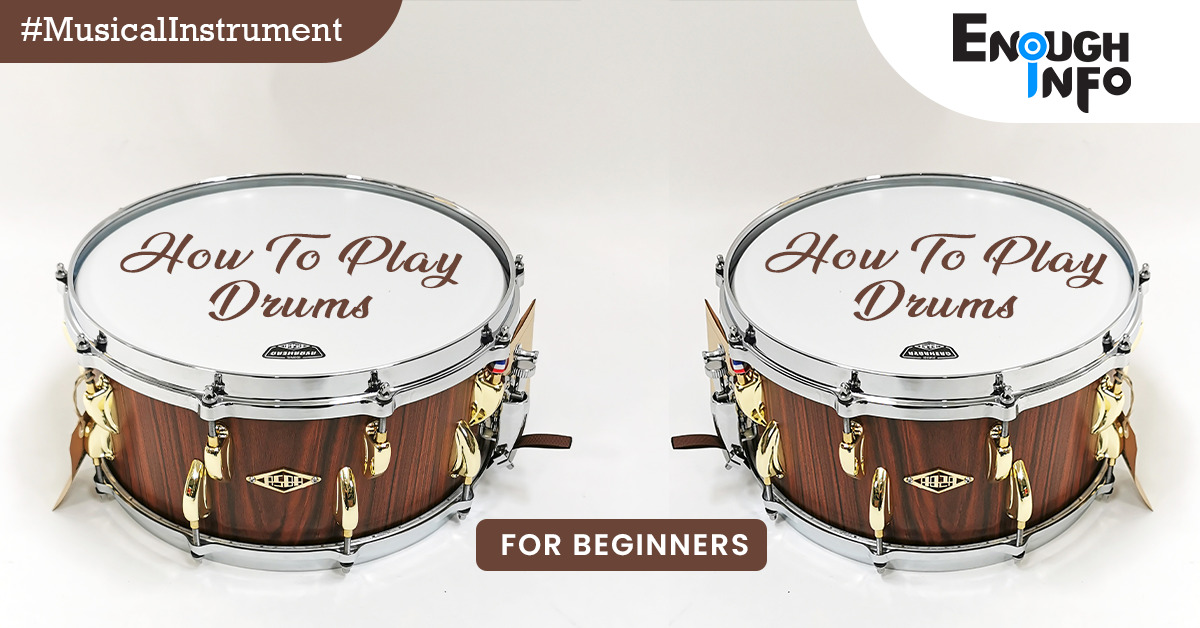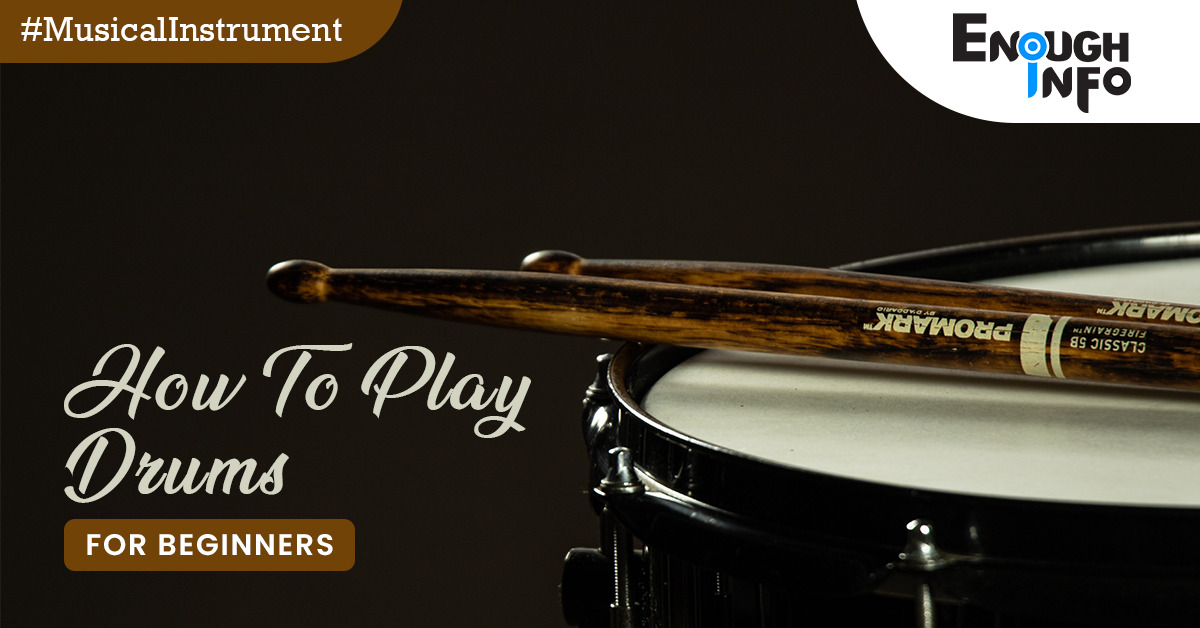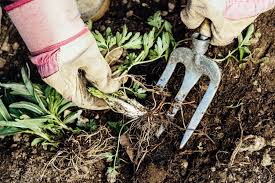How To Play The Drums For Beginners

How To Play The Drums For Beginners: Playing the drums is an exhilarating and rhythmic experience that has captured the hearts of music enthusiasts for decades. If you’re a beginner eager to dive into the world of drumming, this comprehensive guide is here to help you get started. EnoughInfo.com

Read Also: How To Play The Harmonica For Beginners
Learning how to play the drums as a beginner offers numerous benefits, ranging from musical expression and physical coordination to cognitive development and stress relief. It provides an avenue for creativity, discipline, and personal growth. So, if you’ve ever felt the rhythmic pull of the drums, don’t hesitate to embark on this exciting journey of learning and self-expression. How To Make A Vegetarian Meal(The Ultimate Guide)
Learning to play the drums requires discipline and focus. Regular practice sessions help develop a sense of dedication and commitment. Setting goals, working towards them, and overcoming challenges in drumming can teach valuable life skills such as perseverance, patience, and goal-setting.
More reasons why you should Learn to Play the Drums
Rhythm and Coordination: Playing the drums helps develop a strong sense of rhythm and improves hand-foot coordination. Drumming involves simultaneously using both hands and feet to create rhythmic patterns, which can have a positive impact on overall motor skills. How To Style Curly Hair (The Ultimate Guide)
Stress Relief and Creativity: Drumming serves as a creative outlet and can be a great way to relieve stress and express emotions. The physical act of hitting the drums allows you to channel energy and emotions into your playing, providing a therapeutic experience.
Musical Collaboration: Drummers play a crucial role in a band or musical ensemble. By learning to play the drums, you open doors to collaboration with other musicians, forming bands, or participating in jam sessions. Drummers provide the backbone of the rhythm section, driving the music forward.
Physical and Mental Workout: Drumming is a physically demanding activity that requires stamina and endurance. Regular drumming sessions can provide a workout for your arms, legs, and core muscles. Additionally, playing the drums engages the brain, enhancing cognitive functions such as concentration, focus, and multitasking.
Social Interaction: Drumming often involves playing in a band or ensemble setting, which promotes social interaction and collaboration. It provides opportunities to connect with other musicians, learn from them, and work together to create cohesive musical performances. Drumming can foster a sense of community and belonging.
Read Also: How To Play The Violin For Beginners
FAQs & Answers on How to Play the drums for Beginners
1. How often should I practice?
Consistency is key when learning the drums. Aim to practice for at least 30 minutes to an hour every day, or as frequently as your schedule allows. Regular practice sessions will help you build muscle memory, improve coordination, and develop your skills more effectively. How To Make Homemade Salsa
2. Do I need to read sheet music to play the drums?
While reading sheet music can be beneficial, it’s not a requirement to play the drums. Many drummers learn by ear and through visual demonstrations. However, learning to read drum notation and understanding rhythm notation will enhance your musicality and open up more opportunities for collaboration.
3. Should I take drum lessons or learn on my own?
Both approaches have their benefits. Taking drum lessons from a qualified instructor can provide structured guidance, personalized feedback, and a systematic learning path. However, learning on your own through online tutorials, instructional books, and self-guided practice can also be effective. Choose the approach that aligns with your learning style and resources.
4. What drumming styles can I explore as a beginner?
As a beginner, you can explore various drumming styles, including rock, pop, jazz, funk, blues, and Latin rhythms. Start with simpler beats and gradually expand your repertoire as your skills progress. Experimenting with different genres will help you develop versatility and expand your musical horizons.
The Complete Guide: How to Play the Drums for Beginners

From understanding the basic drum setup to mastering essential techniques, we’ll walk you through the step-by-step process of learning to play the drums. So, grab your drumsticks, set up your kit, and let’s embark on an exciting musical journey together. How To Clean A Clogged Drain
Drum Kit Basics and Set-Up:
1. Drum Components:
A standard drum kit consists of the following components:
- Bass Drum: The largest drum in the kit, played with a foot pedal.
- Snare Drum: Positioned between the drummer’s legs, typically played with drumsticks.
- Tom-Toms: Mounted on the bass drum or a separate stand, these drums produce different pitches.
- Hi-hat: Consists of two cymbals placed on a stand, played with a foot pedal or drumsticks.
- Crash Cymbal: A large cymbal that produces a loud, crashing sound.
- Ride Cymbal: A larger cymbal used for sustained, rhythmic playing.
- Floor Tom: A larger tom-tom placed on the floor, played with drumsticks.
Read Also: How To Play the Guitar For Kids
2. Drum Set-Up:
Follow these steps to set up your drum kit properly:
- Place the bass drum in front of you, angled slightly to the side for easy pedal access.
- Position the snare drum between your legs, with the drumhead parallel to the ground.
- Set up the hi-hat stand to your left, positioning the top cymbal at a comfortable height.
- Arrange the toms to your right, adjusting their angles and heights based on your preference.
- Place the floor tom on the right side, within reach of your non-dominant hand.
- Position the crash cymbal on a stand to your right, at a height where you can strike it comfortably.
- Place the ride cymbal on a stand to your right, slightly above the floor tom.
Drumming Techniques for Beginners:
1. Proper Drumstick Grip:
The way you hold your drumsticks greatly impacts your control and sound production. Here’s a simple method to achieve a proper grip:
- Hold the drumstick with your dominant hand using the matched grip technique. Place the stick between your thumb and index finger. How To Start A Successful Podcast
- Curl your other fingers around the stick, maintaining a relaxed grip.
- Ensure that your grip is firm enough to control the stick, but not too tight to restrict movement.
- Repeat the same grip with your non-dominant hand.
2. Basic Drumming Rudiments:
Drumming rudiments are fundamental patterns that form the building blocks of drumming technique. Practice these essential rudiments:
- Single Stroke Roll: Alternate strokes between your dominant and non-dominant hands, creating a continuous, even roll.
- Double Stroke Roll: Play two consecutive strokes with each hand, resulting in a rapid, continuous roll.
- Paradiddles: A pattern combining single and double strokes. Practice the basic paradiddle (R L R R, L R L L) to develop coordination.
- Flams: Play a soft grace note followed by a louder primary stroke, producing a distinct sound.
3. Bass Drum Technique:
Use a bass drum pedal to play the bass drum. Position your foot on the pedal and practice the following techniques:
- Heel Down: Rest your entire foot on the pedal and use your entire leg to generate power and control.
- Heel Up: Lift your heel off the pedal, using mainly your ankle to strike the bass drum.
- Toe-Tapping: Tap your toe on the pedal for faster, lighter bass drum beats.
4. Snare Drum Technique:
The snare drum is played using drumsticks. Practice the following techniques:
- Full Stroke: Lift the drumstick up high and strike the drumhead with force, allowing it to rebound naturally.
- Half Stroke: Lift the drumstick to a medium height and strike the drumhead, stopping the rebound halfway.
- Rim Shots: Strike the rim of the snare drum with a combination of stick and drumhead, producing a sharp, distinctive sound. How To Make A DIY Face Mask For Oily Skin
5. Hi-hat Technique:
The hi-hat consists of two cymbals played with a foot pedal or drumsticks. Practice these techniques:
- Closed Hi-hat: Press the foot pedal to bring the cymbals together, producing a closed, tight sound.
- Open Hi-hat: Lift your foot off the pedal, allowing the cymbals to separate and produce a sustained sound.
- Foot Chick: Use a quick press on the pedal to produce a short, crisp sound.
6. Cymbal Technique:
Cymbals add dynamics and accents to your drumming. Experiment with various striking techniques:
- Crash Cymbal: Strike the cymbal with a drumstick, allowing it to vibrate and produce a loud, explosive sound.
- Ride Cymbal: Use the shoulder of the drumstick to ride along the edge of the cymbal, producing a steady, rhythmic sound.
- Bell of the Ride: Strike the small raised portion at the center of the ride cymbal to create a distinct, bell-like sound.
Basic Drum Beats and Fills:
1. Four-on-the-Floor Beat:
This is a common drum beat used in various musical genres. It involves playing the bass drum on every quarter note while incorporating other elements like the snare drum and hi-hat.
- Start by playing the bass drum on beats 1, 2, 3, and 4.
- Add the snare drum on beats 2 and 4, creating a strong backbeat.
- Use the hi-hat to play eighth notes or quarter notes, maintaining a steady rhythm.
2. Rock Beat:
This versatile beat is often used in rock music and forms a solid foundation for many songs.
- Play the bass drum on beats 1 and 3.
- Add the snare drum on beats 2 and 4. How To Remove Pet Hair From Furniture
- Use the hi-hat to play eighth notes or quarter notes, providing a consistent rhythm.
3. Basic Drum Fills:
Drum fills add excitement and variation to your playing. Start with simple fills using the snare drum and toms:
- Experiment with different combinations of snare drum and tom-tom strokes, such as playing a quick roll across the toms or hitting the snare drum followed by a tom-tom strike.
- Practice transitioning smoothly from the main drum beat into the fill and back to the beat.
Developing Rhythm and Timing:
1. Metronome Practice:
A metronome is a valuable tool for developing rhythm and timing. Start by setting it to a comfortable tempo and play along with it, ensuring that your drumming aligns with the metronome clicks. Gradually increase the tempo as your skills improve.
Read Also: How To Play The Piano Without Reading Sheet Music
2. Counting and Subdivisions:
Counting aloud while playing helps internalize the rhythm. Begin by counting beats in simple time signatures (e.g., 4/4) and gradually progress to more complex time signatures. Practice subdividing beats into smaller note values, such as eighth notes or sixteenth notes.
3. Playing with Music:
Play along with songs or drum tracks to improve your sense of timing and groove. Focus on matching your drumming to the music’s rhythm, accents, and fills. Start with simpler songs and gradually challenge yourself with more complex compositions.
Essential Drumming Exercises for Beginners:
1. Single Stroke Roll:
This exercise improves hand speed, coordination, and control.
- Alternate strokes between your hands, starting with a slow tempo and gradually increasing speed.
- Practice on a practice pad or snare drum, aiming for consistent volume and clarity in each stroke.
2. Double Stroke Roll:
This exercise enhances hand dexterity and fluidity.
- Play two consecutive strokes with each hand, starting slowly and gradually increasing speed.
- Focus on maintaining an even rhythm and clear distinction between the two strokes.
3. Paradiddles:
Paradiddles help develop coordination and control between your hands.
- Practice the basic paradiddle pattern (R L R R, L R L L), starting slowly and gradually increasing speed.
- Emphasize consistency in volume and timing between the right and left hands.
4. Flams:
Flams improve control and dynamics in your drumming.
- Play a flam by striking the drumhead slightly before the stick in your other hand.
- Practice flams at different speeds and experiment with accentuating the primary stroke.
5. Drum Rudiment Exercises:
Drum rudiments are fundamental patterns that develop technical skills and coordination. Here are a few essential rudiments to practice:
- Single Stroke Roll: Alternate strokes between your hands, gradually increasing speed and maintaining evenness in volume and timing.
- Double Stroke Roll: Play two consecutive strokes with each hand, focusing on maintaining a consistent and smooth roll.
- Paradiddles: Practice the basic paradiddle pattern (R L R R, L R L L) and its variations. Focus on maintaining a steady rhythm and clarity between the different strokes.
- Flam: Play a flam by striking the drumhead slightly before the stick in your other hand. Practice flams at different speeds and experiment with accentuating the primary stroke.
- Drag: A drag is a single grace note followed by a primary stroke. Practice the single drag (R r L l, L l R r) and double drag (R rr L ll, L ll R rr) exercises to develop control and precision.
- Ruff: Ruffs consist of multiple grace notes followed by a primary stroke. Practice single stroke ruffs (Rrr Lll, Lll Rrr) and double stroke ruffs (Rrrr Llll, Llll Rrrr) to improve hand speed and control.
- Five Stroke Roll: Play alternating single strokes followed by a double stroke with each hand. Focus on maintaining clarity and control between the single and double strokes.
- Flamadiddle: Combine the flam and paradiddle rudiments to create the flamadiddle pattern (R L f R, L R f L). Practice this pattern with different accentuations and at various tempos.
Remember to start these exercises at a comfortable speed and gradually increase the tempo as you gain proficiency. Consistent practice and attention to technique will help you improve your drumming skills.
Read Also: How To Play The Ukulele (For Beginners)
Conclusion:
Drumming needs effort, practice, and a love of rhythm. You may become a good drummer by learning drum set basics, practicing rudiments, and trying other styles.
Start with an appropriate drumstick grip and practice bass, snare, hi-hat, and cymbal skills. Build your repertory and timing by practicing fundamental drum beats and fills. To improve technique, do drumming exercises and rudiments.
Progress requires continuous practice. Use metronomes and drum tracks to develop timing and groove. Take drum classes or use internet tools to learn.
Remember that drumming is a rewarding journey that takes patience and endurance. Enjoy the process, your music, and discover your drumming style. You’ll become a confident drummer with practise and determination.
Grab your drumsticks, set up your equipment, and let the beat lead you on an exhilarating musical voyage. Drum on!
Recommended;
How Long Do NBA Games Really Last? (2023 Report)
How To Play The Flute For Beginners




